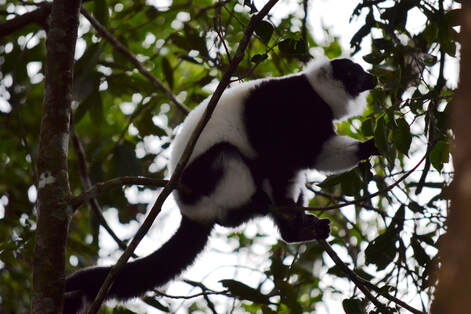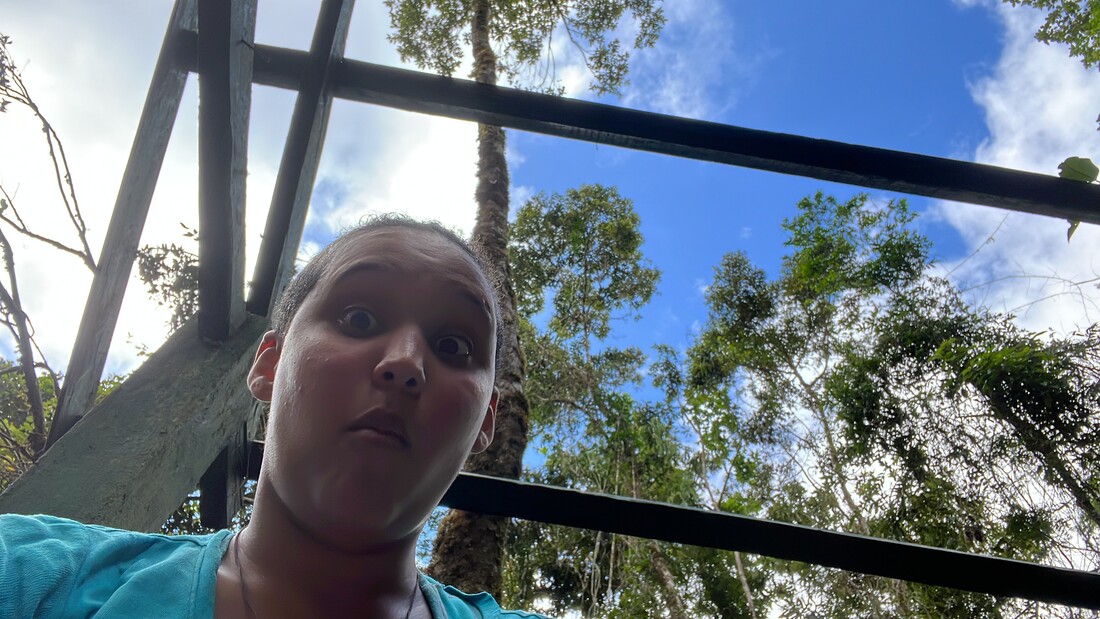Reconnection through pandemics and cyclones Jade Tonos is back in the field and shares her experience ... In many ways, 2022 has so far been a year of reconnection. As pandemic restrictions lift across the world and people return to their previous habits, many of us have specifically sought the joy of reunion. For many field biologists, the most important reunions have been their return to the forests, grasslands, coasts, wetlands, and mountains where they work. Like many others, I had to cancel my 2020 field season in Madagascar when the pandemic hit. This disruption threw my PhD completion plans out of sync and left me with the challenge of creating new projects and defending on time. After pulling that off, I was thrilled to join the Razafindratsima lab as a post-doc at UC Berkeley. This position brought immediate reunions, getting to see and work alongside the people I had missed from my work in Madagascar. It also brought the promise of a bigger reunion in the future, a return to Malagasy forests. I have now been in Madagascar for three weeks, filled with brilliant reunions and new encounters. Though when I began this journey, I did not expect to also encounter another reunion in-process: the return of Malagasy lemurs to forests damaged by recent cyclones. First Connections: People, Cities and Landscape
This year the visit was full of re-wirings, as I practiced my Malagasy and continued to fill out my mental map of the city after a long absence. It is always a pleasure to turn an unfamiliar corner to find yourself in a familiar place or to successfully navigate to a location you have only visited once or twice before. During this process, I rely heavily on colleagues and friends, and this year I was particularly happy to be greeted with familiar faces. After a week, I finally set out to Ranomafana. As always, it was a relief to leave the busy city for quieter landscapes, and though one may be inclined to despair at the lack of forests, it is hard to deny the beauty of the Malagasy countryside. Forest Connection  Black and white ruffed lemur in Ranomafana. Photo by Onja R. Black and white ruffed lemur in Ranomafana. Photo by Onja R. Arriving in Ranomafana is always a satisfying homecoming. Despite difficulties caused by the pandemic, I was glad to see the staff had barely changed. The forest, from the road, looked similarly unchanged. An expanse of green clinging to vast hills. The story drastically changed when I entered the forest; in the lowlands, the damage appears minimal; but as you climb further in and up you begin to encounter damage. The damage caused by the two cyclones in early 2022 is first apparent by single fallen trees blocking the path, eventually becoming whole sections of forest knocked flat across the trail, blocking it completely and forcing us to take alternative routes. These encounters leave me with a mix of sadness and admiration. The death of these trees is sad, but getting to witness their vast but shallow roots now exposed has left me with a better appreciation of the structure of this forest. These open locations also offer dazzling views of the whole forest stretching away in a way that may trick you into thinking they are never-ending. Though I did not notice during that first harrowing hike, it did become apparent soon afterward that the cyclone had also left the forest a quieter place. We did not hear groups of Black-and-white ruffed lemurs greeting the morning with their haunting calls. We did not encounter red-fronted lemurs dashing noisily through the forest in large groups. And no matter how hard I peered at lumps of reddish moss in the canopy, none of them unfolded to reveal themselves as a quiet and observant, red-bellied lemur family. Conversing with my local technicians and other researchers, the picture came clearly together. The cyclone severely affected the forest, damaging many of the largest fruit-producing trees, and hampering the ability of the rest to provide on their regular schedule. At the same time, reports of lemur groups venturing farther out of the forest than they ever have, keep coming. For a startling example, the black-and-white ruffed lemur, the shiest of the three primarily frugivorous lemurs, has been spotted snacking on bananas in the middle of nearby villages. Our project for the summer was focused on examining how the qualities and spatial distribution of fruits affect lemur behavior, movement, and seed dispersal. And though this situation throws a wrench in our plan, it also provides us with an opportunity to study the recovery of plant-animal interactions. These connections, severed by the cyclones, must recover as plants regain the resources to flower and fruit again and the lemurs return to the forest. I am eager to continue my work here and to be a front-seat witness to this reconnection between the displaced lemurs and the trees that feed them and rely on them for seed dispersal. Text and pictures by Jade Tonos
Comments are closed.
|
We're using this space to share updates on our adventures in the field. Archives
May 2024
Categories
All
|




 RSS Feed
RSS Feed
